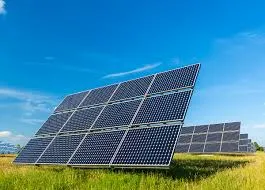Understanding the Costs of PV Solar Panels for Your Home Installation
Understanding the Costs of PV Panels A Comprehensive Overview
Photovoltaic (PV) panels, commonly known as solar panels, have gained tremendous popularity in both residential and commercial applications over the past decade. As the world increasingly turns to renewable energy sources to combat climate change, understanding the costs associated with PV panels becomes crucial for potential buyers and investors. This article will break down the various cost components of PV panels, factors influencing pricing, and the long-term financial benefits of solar energy.
1. Initial Costs of PV Panels
The initial cost of purchasing and installing PV panels can vary widely based on several factors. On average, residential solar panel systems can cost between $15,000 to $30,000 before any incentives. This price usually covers the panels, inverters, mounting hardware, and installation services.
Components of Cost - PV Panels The type and quality of panels play a significant role in cost. Monocrystalline panels are often more expensive but provide higher efficiency, while polycrystalline panels are generally cheaper but less efficient. - Inverters These devices convert the direct current (DC) produced by panels into alternating current (AC) used by most home appliances. String inverters are more affordable, while microinverters come at a higher price due to their superior performance in partial shading conditions. - Installation Labor costs can vary greatly based on geographical location and the complexity of the installation. On average, installation can account for 10% to 20% of the total cost.
2. Influencing Factors on PV Panel Costs
Several factors can influence the costs of PV panels
- Economies of Scale Larger installations often benefit from reduced per-unit costs. Commercial rooftop installations tend to have lower costs per watt compared to smaller residential systems. - Government Incentives Tax rebates, state incentives, and federal programs significantly affect the financial viability of solar investments, making it essential for clients to stay informed about available benefits. - Solar Technology Advancements As technology improves, the cost of producing PV panels continues to drop. Innovations in material science and manufacturing processes may lead to higher efficiency and lower prices in the future.
pv panels cost

3. Long-term Financial Considerations
While the upfront investment in solar panels can be substantial, the long-term savings can be significant. Here are some of the economic benefits associated with solar energy
- Energy Savings Homes with solar panels can offset a large portion of their electricity bills. In many cases, homeowners report savings of 50% or more on their monthly energy expenses. - Increased Property Value Studies have shown that homes equipped with solar panels typically sell for more than comparable homes without them. Buyers are often willing to pay a premium for properties with renewable energy systems. - Net Metering Many regions offer net metering, allowing solar panel owners to sell excess energy back to the grid, further enhancing financial returns.
4. Financing Options
For many homeowners, the initial cost of PV panels can be prohibitive. However, financing options are increasingly available to help individuals make the switch to solar
- Solar Loans Various lenders offer specialized solar loans that allow homeowners to pay for their systems over time, making the investment more manageable. - Leasing Some companies provide solar panel leasing options, where the homeowner pays a monthly fee to use the panels rather than purchasing them outright. This can be an attractive option for those who want to avoid large upfront costs. - Power Purchase Agreements (PPAs) These agreements allow homeowners to purchase the energy generated by solar panels at a predetermined price, usually lower than their utility rates, without owning the panels outright.
Conclusion
In summary, while the initial cost of PV panels may seem daunting, various factors can influence pricing, and the potential long-term savings and benefits can be significant. With the continuous advancement in solar technology and available financial options, investing in PV panels is becoming increasingly accessible and attractive. As the world moves toward a more sustainable future, understanding the economics of solar energy is essential for anyone considering a transition to renewable power.
-
Unlocking Energy Freedom with the Off Grid Solar InverterNewsJun.06,2025
-
Unlock More Solar Power with a High-Efficiency Bifacial Solar PanelNewsJun.06,2025
-
Power Your Future with High-Efficiency Monocrystalline Solar PanelsNewsJun.06,2025
-
Next-Gen Solar Power Starts with Micro Solar InvertersNewsJun.06,2025
-
Harnessing Peak Efficiency with the On Grid Solar InverterNewsJun.06,2025
-
Discover Unmatched Efficiency with the Latest String Solar InverterNewsJun.06,2025







